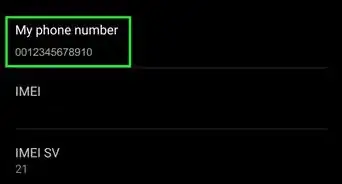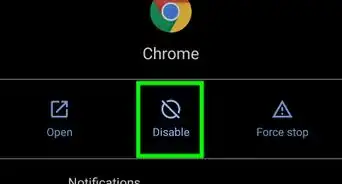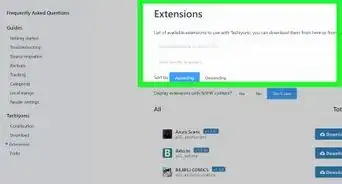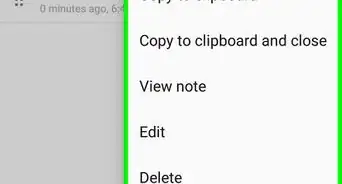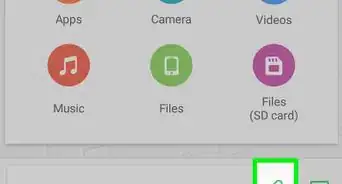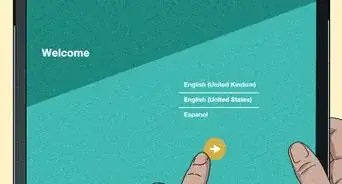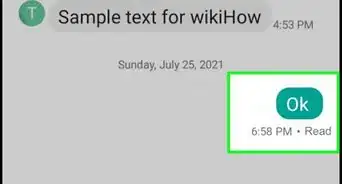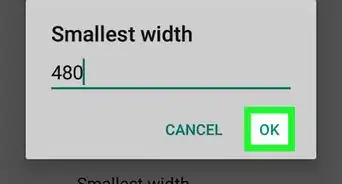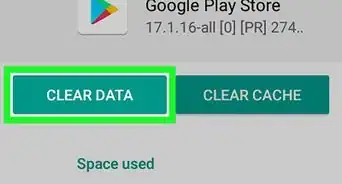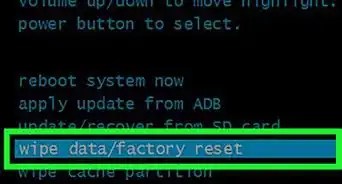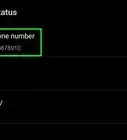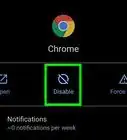This article was co-authored by wikiHow Staff. Our trained team of editors and researchers validate articles for accuracy and comprehensiveness. wikiHow's Content Management Team carefully monitors the work from our editorial staff to ensure that each article is backed by trusted research and meets our high quality standards.
This article has been viewed 399,270 times.
Learn more...
HTTP Post is part of a deprecated HTTP classes like org.apache.http and AndroidHttpClient as of Android 5.1.[1] Migrate your code to the HttpURLConnection classes which includes Posting functionality. HTTP Post is used in Java to request that a specific web server receive and store data submitted within a request form. The data is submitted and stored in name-value pairs. Examples of pairs include: email-your email address; username-your username; and password-your password.
Steps
Creating a Try Block and HttpURLConnection Object
-
1Add internet permissions to the Android Manifest. The Android Manifest is an XML file that provides important information to the Android system that determines device compatibility and access to features. In the “AndroidManifest.xml” file, enter the following line to provide internet access.
<uses-permission android:name="android.permission.INTERNET" />
-
2Create a try block. In Java, a try statement is an exception handler that will prevent the program from crashing if it is not able to perform an action. Because this will require a connection to a network location, a try statement will catch an exception if it is not able to establish a connection. You can add this to a new Java method.[2]
try { //enter statements that can cause exceptions }
Advertisement -
3Build HttpURLConnection and URL objects. Java is an Object-Oriented language. An object is comprised of states and behaviors which is an instance of a class. The HttpURLConnection object sends and receives data over the internet. In your code, begin your new method by creating a URL object and assign it a URL for the HttpURLConnection object to connect to. [3]
- For best practice, establish the URL and HttpURLConnection objects outside of the try block to make it easier to catch exceptions.
URL url = new URL(“http://exampleurl.com/”); HttpURLConnection client = (HttpURLConnection) url.openConnection();
URL url = new URL(“http://exampleurl.com/”); HttpURLConnection client = null; try { client = (HttpURLConnection) url.openConnection(); }
Posting the Output Request and Handling Exceptions
-
1Set the request method to Post. In order to send information to the server, you must set the HttpURLConnection object’s type to post and set the output to true using setDoOutput(). Use the setRequestProperty() function to set a general request property which requires two elements, a key with a known request from the server and a value that’s contained within the corresponding key.
- The setRequestProperty() function is used as the Accept-Encoding request header to disable automatic decompression.
client.setRequestMethod(“POST”); client.setRequestProperty(“Key”,”Value”); client.setDoOutput(true);
- The setRequestProperty() function is used as the Accept-Encoding request header to disable automatic decompression.
-
2Output the stream to the server. You must request the output stream from the server in order to be able to write to the output stream, or post, then flush and close the stream when finished.
- For performance reasons, it’s a good idea to let the server know how large in bytes the content will be. The best method is setFixedLengthStreamingMode(int) when the body length is known,[4] whereas setChunkedStreamingMode(int) is used if it’s length is not known.[5] Not using either of the previous methods causes the HttpURLConnection object to buffer the complete body in memory before being transmitted.
OutputStream outputPost = new BufferedOutputStream(client.getOutputStream()); writeStream(outputPost); outputPost.flush(); outputPost.close();
client.setFixedLengthStreamingMode(outputPost.getBytes().length); client.setChunkedStreamingMode(0);
-
3Catch any exceptions. After the try statement, use the catch block to check for an exception for input and output with IOException, catch a URL error with the MalformedURL exception and check if the URL does not provide a response in time with the SocketTimeoutException.
catch(MalformedURLException error) { //Handles an incorrectly entered URL } catch(SocketTimeoutException error) { //Handles URL access timeout. } catch (IOException error) { //Handles input and output errors }
-
4Disconnect from the URL. After you are finished with your URL connection, you will need to disconnect from the URL. Be sure to check that you are connected to a URL before attempting to disconnect.
finally { if(client != null) // Make sure the connection is not null. client.disconnect(); }
Community Q&A
-
QuestionHow do I resolve the method 'writeStream(java.io.OutputStream)'?
 Community AnswerThis method seems to be just a sample of what you should do in this point. You need then to do your own implementation to write data to the OutputStream. You can find a simple samples on internet explaining how to write different types of data to an OutputStream.
Community AnswerThis method seems to be just a sample of what you should do in this point. You need then to do your own implementation to write data to the OutputStream. You can find a simple samples on internet explaining how to write different types of data to an OutputStream. -
QuestionWhy do we need to include the android.permission.INTERNET line in the Android Manifest?
 Community AnswerThe Android Manifest file presents the Android system with essential information about the app and is required for every app in its root directory. The INTERNET permission grants access to the API that opens the device's network sockets.
Community AnswerThe Android Manifest file presents the Android system with essential information about the app and is required for every app in its root directory. The INTERNET permission grants access to the API that opens the device's network sockets. -
QuestionI'm receiving errors that the symbol cannot be resolved for the URL and HttpURLConnection objects. What packages am I supposed to import?
 Community AnswerAndroid Studio can be set to automatically import packages once the symbols are references or pasted into the code. You can also manually add in the packages by typing in and without the book ended arrow symbols. To set Android Studio to automatically import packages, Windows and Linux users must click on File>Settings>Edti>General>Auto Import>Java and Mac users must click on Android Studio>Preferences. Change "Insert imports on paste" to all and mark "Add unambiguous imports on the fly" then save your changes.
Community AnswerAndroid Studio can be set to automatically import packages once the symbols are references or pasted into the code. You can also manually add in the packages by typing in and without the book ended arrow symbols. To set Android Studio to automatically import packages, Windows and Linux users must click on File>Settings>Edti>General>Auto Import>Java and Mac users must click on Android Studio>Preferences. Change "Insert imports on paste" to all and mark "Add unambiguous imports on the fly" then save your changes.
Things You'll Need
- Java IDE
- Android development tools (SDK, emulator, etc.)
- Android developer's phone or other Android powered device (optional for testing)
- Internet connection (for testing)
References
- ↑ https://developer.android.com/about/versions/lollipop/android-5.1#http
- ↑ http://www.dummies.com/how-to/content/try-statements-in-java.html
- ↑ http://developer.android.com/reference/java/net/HttpURLConnection.html
- ↑ https://ihofmann.wordpress.com/2013/01/23/android-sending-post-requests-with-parameters/
- ↑ http://developer.android.com/reference/java/net/HttpURLConnection.html
About This Article
1. Add internet permissions to the Android Manifest.
2. Create a try block.
3. Build HttpURLConnection and URL objects.
4. Set the output to post to the server.
